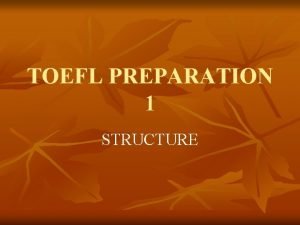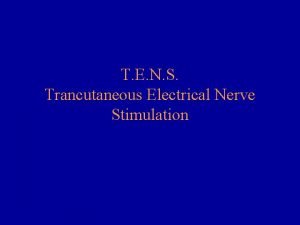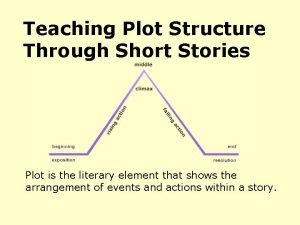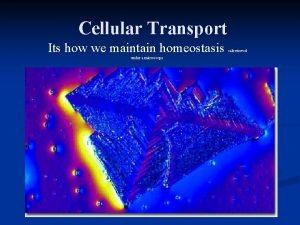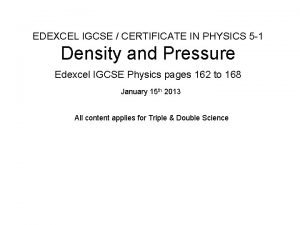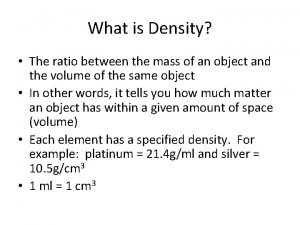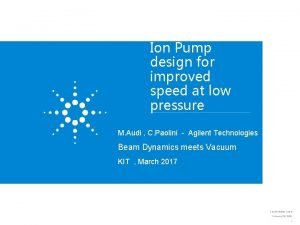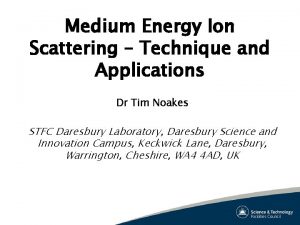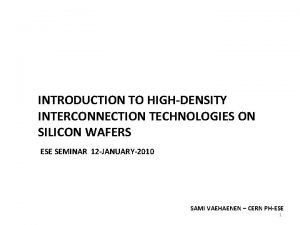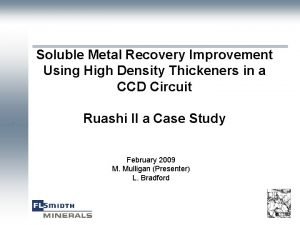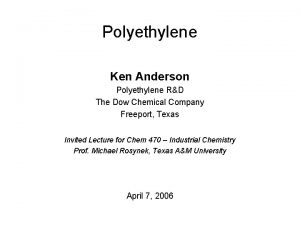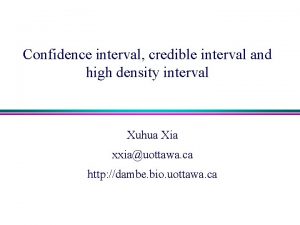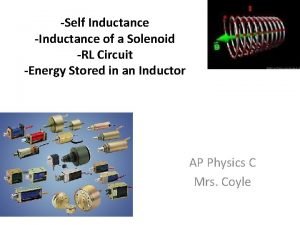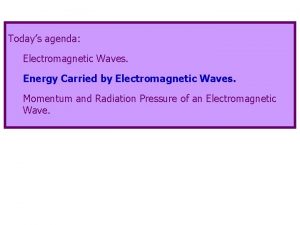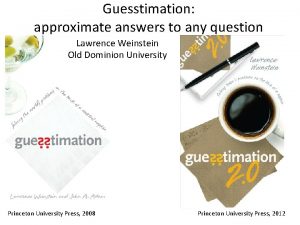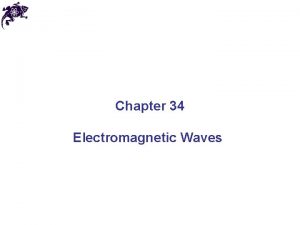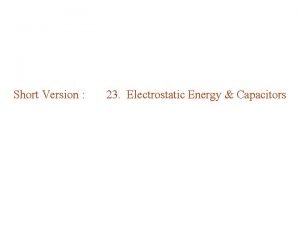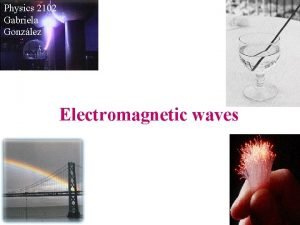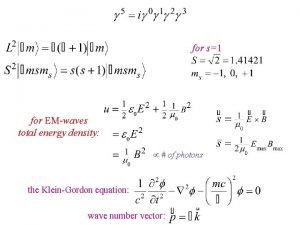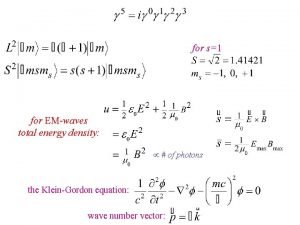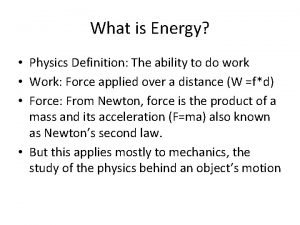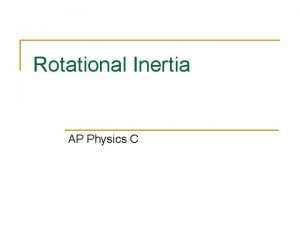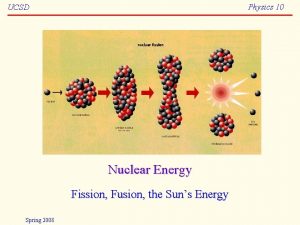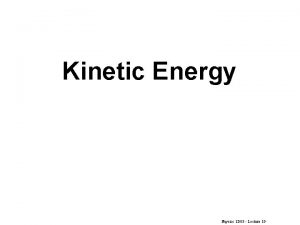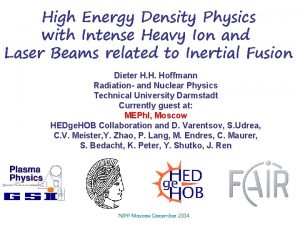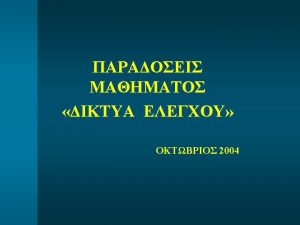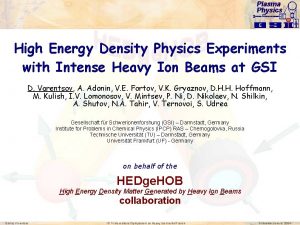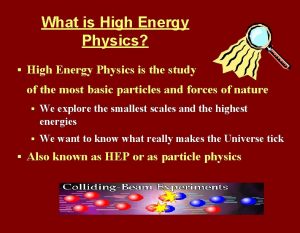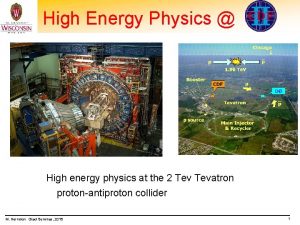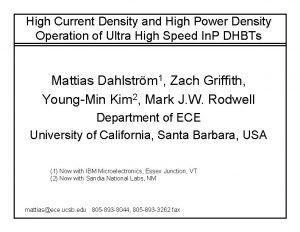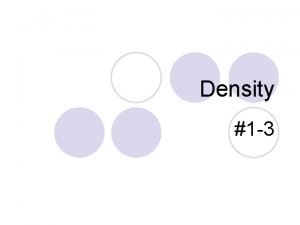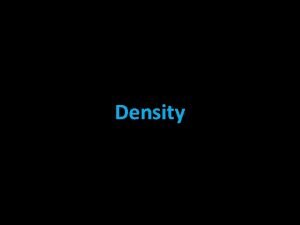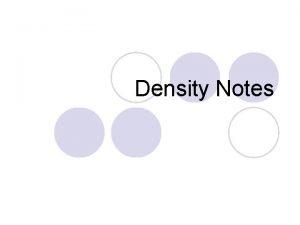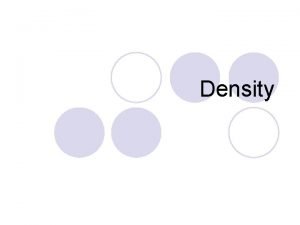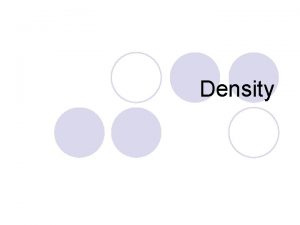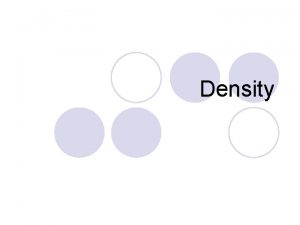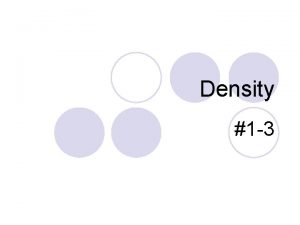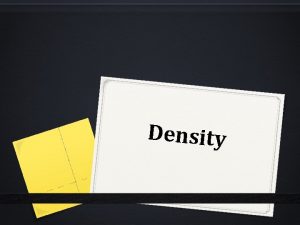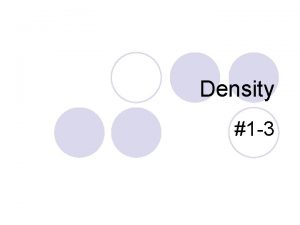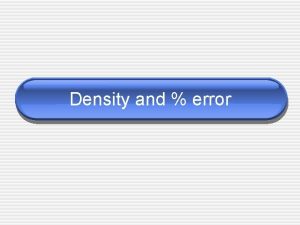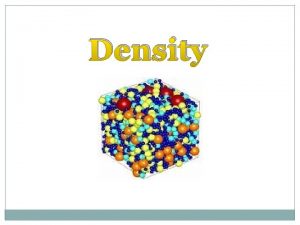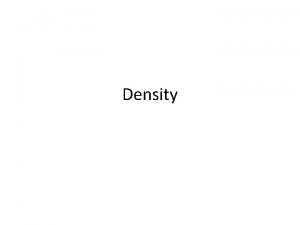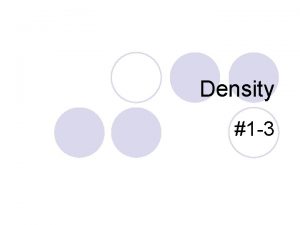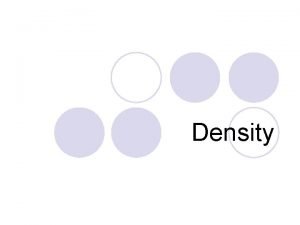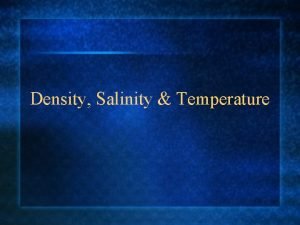Ion Driven High Energy Density Physics With Intense














































- Slides: 46

Ion Driven High Energy Density Physics With Intense Heavy Ion and Laser Beams Dieter H. H. Hoffmann Radiation- and Nuclear Physics Technical University Darmstadt HEDge. HOB Collaboration Currently guest at : Chinese Acad. Science, IMP, Lanzhou International Workshop on Colectivity in Relativistoc Heavy Ion Collisions, Kolymbari, Kreta September 2014

Topics: Remarks on Inertial Fusion Properties of Heavy Ion Beams Ion Beam Plasma Interaction Generating WARM DENSE MATTER with Ion Beams Diagnostics: Proton Microscopy 2

Indirectly heated Fusion -Target Hohlraumtarget Compression Surface heating by radiation Ignition Burn

Fast Ignition Scenario with Heavy Ion Driver M. Roth, TU-Darmstadt

Heavy Ion Driven Ignition Facility (HIDIF) GSI-98 -06 report,

Ion- and Laserbeam Interaction with Matter

PHASE DIAGRAM OF MATTER ~104 1023 1020 Z 4 26 ~1000 Big Bang HE TF Lg N ~1 Metals 22 White Dwarth 100 Fusion-IC SUN Jupiter Heavy Ion Beams n 3 ~ 1 Plasma processing Ionization 3 Relativistic T ~ mc 2 Big Bang e+e- pairs Ry 5 1 Mb Tokamak Z, pinch 14 Flames 1 Gb MHD Sparc Semicond. ~1 FAIR B. Dwarth Debye 18 1 Tb Stellar Corona Lg T 7 9 V. E. Fortov

Ion Beam Facilities for HEDP (Past) GSI, Darmstadt ИТЭФ, Москва HIFS-VNL, Berkeley IMP, Lanzhou

Rare Isotope Science Project M. Chung 2014 Korea 9

Setup at HIMAC, Japan M. Ogawa 2003

Ion Beam Facilities for HEDP (Future) FAIR, Darmstadt HIAF, China (Lanzhou)

Beam Parameters SIS-18 FAIR(Ph-I) HIAF (V 1) E 0 0. 4 Ge. V/u 1. 1 Ge. V/u N 4× 109 4× 1011 1× 1012 Etotal 0. 06 k. J 15 k. J 40 k. J Sf ~1 mm 1 mm - 0. 5 mm τ 130 ns 50 ns 130 ns - 33 ns Es ~1 k. J/g 120 k. J/g 300 k. J/g-1. 2 MJ/g Eρ 2× 1010 J/m 3 2. 4× 1012 J/m 3 6× 1012 J/m 3 -2. 4× 1013 J/m 3

Z 6: Beam Plasma Interaction heavy ion beam 1 -10 Me. V/u, low power 38/108 MHz

Energy Loss of Uranium Ions in Matter Uranium Ions in Pb -Target LSS-regime UNILAC Z 6 SIS 18 HHT

Energy Loss of Lead Ions in Hydrogen Plasma

Stopping Power of (ionized) matter projectile atomic number bound electrons plasma (free) electrons



Laser – Heavy Ion Beam Combined Experiments Stop detector las er b eam Zav, Vav TOF UNILAC Ion beam Z 0, V 0 Target chamber target PHELIX-laser : 0. 5 k. J @ 1 -15 ns, Heavy ion beam: 3<Z<92, E=3– 13 Me. V/u, RF: 108/36 MHz Currently: 10° beam line: directly laser driven plasma → energy loss in ideal plasma 90° beam line: Hohlraum radiation driven plasma → energy loss in non-ideal plasma

PHELIX: Beam Transfer to Z 6

Z 6 – a unique facility offering ion and laser beams for combined experiments visible streak camera laser interferometry X-ray streak camera ü Unilac ion beam: probing 3<Z<92 E = 3 -13 Me. V/u f=108/36 MHz, Dtion = 3 ns (FWHM) ü Phelix laser beam: different laser parameters for different experiments § 0. 3 -1 k. J @ 0. 7 - 20 ns, (2 w in progress) § 50 J @ 0. 5 - 2 ps → 100 TW (compressed 12 cm beam, in progress) § 300 J @ ~ ns (broad spectral width) ü nhelix laser beam: up to 3 laser beams simultaneously on the target: § 100 J @ 6 -14 ns § 5 J @ 0. 5 ns (Thomson scattering) § <1 m. J @ 0. 5 ns (interferometry) X-ray pinhole Phel ix be am target pinhole cameras VUVspectrometer ion beam

Experimental Setup of Ion Energy Loss Measurements in Laser Plasmas 9. 2 ns 12 m TOF 1 mm • projectile: – 40 Ar 16+ – E= 4 Me. V/u • laser parameters: – – λ=1064 nm E=100 J Tpulse=10 ns (FWHM) dfocus=1 mm • stop detector: – polycrystalline diamond 19 µm

2 - high energy laser beams

Two sided target illumination with PHELIX and nhelix A. Frank


HHT: heavy ion beam 200 -500 Me. V/u, 4· 109 U ions in 120 ns pulse, ~ k. J/g

HEDge. HOB Experimental Program 27

Heating Matter with Intense Ion Beams Ne 10+ beam at E 0 =300 Me. V/u penetrating into a Kr crystal Intense Pulse of Heavy Ions Bragg Peak

Physics of Generating High Energy Density in Matter with Ion Beams Er : Specific Deposition Energy [J/g] tb: Beam bunch length [s] Pr : Specific Deposition Power [W/g]

What are the most interesting problems for the next 10 years ? What type of experiments can be done at new international facilities HED regions of the phase diagram accessible by intense heavy ion beams

Heavy ion beam can be used as an efficient diagnostic tool for HED experiments time-resolving energy loss spectrometer heavy ion beam solid target Energy Loss Dynamics (ELD) Target collimators SIS-18 heavy ion beam target chamber fast scintillator streak camera

ELD provides direct quantitative information about the physical state of the interior of the target Verification of EOS model for neon SESAME Ch. TEOS experiment Energy loss [%] 90 80 70 60 50 40 U, 1. 2 109 solid 190 Me. V/u Ne 30 238 20 200 300 400 500 } 600 700 50 40 35 30 25 20 15 800 Time [ns] 900 1000 1100 SESAME Ch. TEOS experiment 45 Energy loss [%] 100 1. 8 108 307 Me. V/u 238 U, 200 300 } 400 solid Ne 500 600 Time [ns] 700 For HEDge. HOB experiments: main SIS-100 heating pulse (50 ns) complementary 90º ion beam (200 ns-1. 4 s) from SIS-18 time-resolved target density along the axis and in the transverse plane, stopping properties of dense non-ideal plasmas D. Varentsov et al. : Europhys. Lett. 64 (2003) 57; Laser and Part. Beams 20 (2002) 485; Nucl. Instr. Meth. B 174 (2001) 215. 800

HEDP experiments with intense heavy ion beams HHT: High energy High Temperature: ions up to U, 50 – 450 AMe. V pulse duration 100 – 1000 ns focal spot size 0. 15 – 1. 5 mm diagnostics for intense, short ion pulses Beams for HEDP experiments: 238 U 73+, U , 350 AMe. V, e-cooled 2 – 4· 109 ions in 100– 300 ns bunch ≤ 300 µm (FWHM) spot at the target Solid metallic targets: specific energy: ~ k. J/g temperature: up to 2 e. V pressure: in multi-kbar range

N. Tahir





P. Lang, M. Endres, D. Varentsov, S. Udrea See also Frank Merrill on Tuesday




Permanent Magnetic Quadrupoles (PMQ) – design High Gradient Split-Pole Quadrupole • Extremely High-Level Gradient - Maximal Demagnetization Factor • Flexible Choice of the REPM Coercivity on Magnetization • Minimal Demagnetization in Median Planes (in Critical Spaces) • Gradient – Fixed PMQ parameter Value Inner aperture, 2∙Ri 15 mm Outer dimensions, 2∙Ro x L 79 x 100 mm Internal ring magnetization 1. 16 T External ring magnetization 1. 19 T Pole tip field 1. 7 T

Technical Proposal PRIOR: Proton Microscope at FAIR COSY simulation of magnetic optics

Technical Proposal PRIOR: Proton Microscope at FAIR QSM quadrupole Magnetic aperture diameter Pole tip field 1. 3 T Module length 40 mm Four Modules Assembly Axis Gradient Distribution Blue – field simulation Red – field measurements 40 mm 1 mm ITEP proton microscope 1 mm

The HEDge. HOB collaboration: Studies on high energy density matter with intense heavy ion and laser beams at FAIR (officially inaugurated: June 2005) >200 Scientists 44 Institutes 15 Countries http: //hedgehob. physik. tu-darmstadt. de 46
 Nda full dac
Nda full dac An intense play activity that requires substantial energy
An intense play activity that requires substantial energy Ejemplo de fuerza ion ion
Ejemplo de fuerza ion ion Ion dipolo
Ion dipolo Ejemplo de fuerza ion ion
Ejemplo de fuerza ion ion Induced dipole
Induced dipole What is the difference between density and relative density
What is the difference between density and relative density Fcc linear density
Fcc linear density Crude population density vs physiological density
Crude population density vs physiological density Linear density of atoms
Linear density of atoms Physiological density egypt
Physiological density egypt Toefl structure and written expression prep
Toefl structure and written expression prep Indication of tens
Indication of tens Trevor spends 45 minutes
Trevor spends 45 minutes Intensive verb example
Intensive verb example Plot in a story
Plot in a story Abate or become less intense
Abate or become less intense During intense exercise potassium tends to accumulate
During intense exercise potassium tends to accumulate Igcse density questions
Igcse density questions What is denaity
What is denaity High pumping speed large ion pump
High pumping speed large ion pump Energy energy transfer and general energy analysis
Energy energy transfer and general energy analysis Energy energy transfer and general energy analysis
Energy energy transfer and general energy analysis Elastic energy
Elastic energy Introduction to high density interconnects
Introduction to high density interconnects Soluble metal recovery
Soluble metal recovery Properties of solid
Properties of solid High density interval
High density interval Self-inductance of a solenoid
Self-inductance of a solenoid Electromagnetic wave energy
Electromagnetic wave energy Xkcd uranium energy density
Xkcd uranium energy density Hertz experiment electromagnetic waves
Hertz experiment electromagnetic waves Energy density in electrostatic field
Energy density in electrostatic field Conductor
Conductor Energy density of electromagnetic wave
Energy density of electromagnetic wave Energy density formula
Energy density formula Formula of energy density
Formula of energy density Modern physics vs classical physics
Modern physics vs classical physics University physics with modern physics fifteenth edition
University physics with modern physics fifteenth edition Ia physics examples
Ia physics examples Energy in physics definition
Energy in physics definition What is work physics
What is work physics What is energy
What is energy Rolling physics
Rolling physics 0kei0
0kei0 Nuclear energy in physics
Nuclear energy in physics Define kinetic energy
Define kinetic energy











